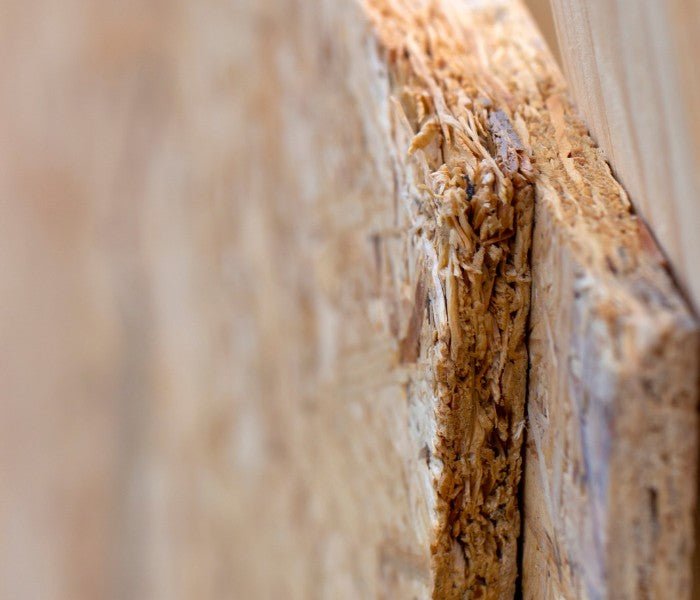
Exploring OSB Board: Versatile Uses and Benefits
You've likely heard of plywood and particleboard, but have you considered the potential of OSB board? This often-overlooked building material offers a wide range of applications and advantages that may surprise you.
From its composition to its versatility, OSB board has become a staple in many construction and DIY projects. But what sets it apart from other options, and how can it benefit your next endeavor?
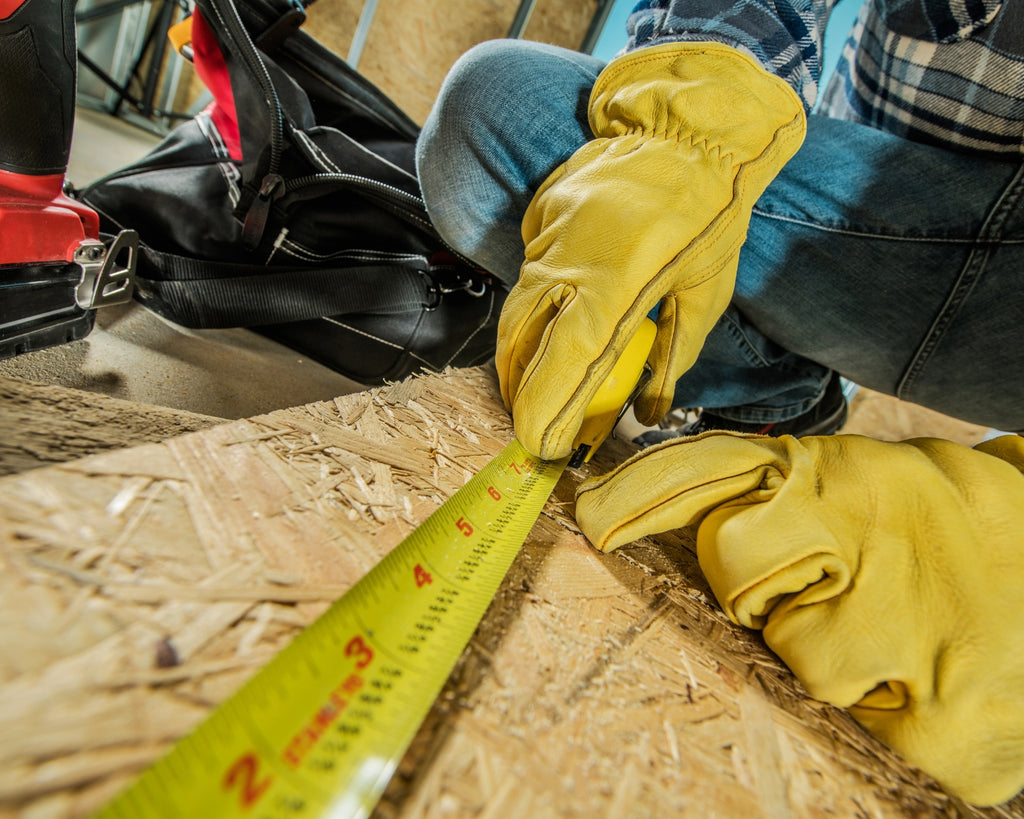
What Is OSB Board?
OSB board, also known as oriented strand board, is a versatile engineered wood product widely used in construction for its strength and affordability. Made by compressing and gluing together strands of wood in specific orientations, OSB board is a popular choice for structural use in residential and commercial buildings. Its engineered wood composition gives it excellent stability and uniformity, making it less prone to warping or splitting compared to traditional plywood. The strands are layered in cross-directional patterns, enhancing the board's mechanical properties and creating a strong, dimensionally consistent material.
Oriented strand board is designed to be an economical alternative to plywood, offering comparable performance at a lower cost. Its manufacturing process also allows for larger panel sizes, reducing the number of joints and improving overall structural integrity. OSB board is commonly used for sheathing, sub flooring, and roofing, as well as in wall and ceiling applications. Its versatility and strength make it a go-to choice for builders and contractors looking for reliable, cost-effective engineered wood products.
OSB Board Composition
With its distinct composition of compressed and glued wood strands, oriented strand board offers remarkable stability and uniformity, making it a highly sought-after material for various construction applications.
OSB board composition is a key factor in its strength and durability. Here's why the composition of OSB board is so important:
- Strength: The compressed layers of wood strands create a robust material that can withstand heavy loads and pressure, providing a sense of security in your construction projects.
- Sustainability: By utilizing wood fibers that are bonded together, OSB board promotes eco-friendly practices, allowing you to feel good about your environmental impact.
- Versatility: The composition of OSB board enables it to be used in a wide range of applications, giving you the freedom to explore creative and practical uses for this reliable material.
- Reliability: The bonded wood fibers create a consistent and reliable product, giving you peace of mind in the quality and performance of your construction projects.
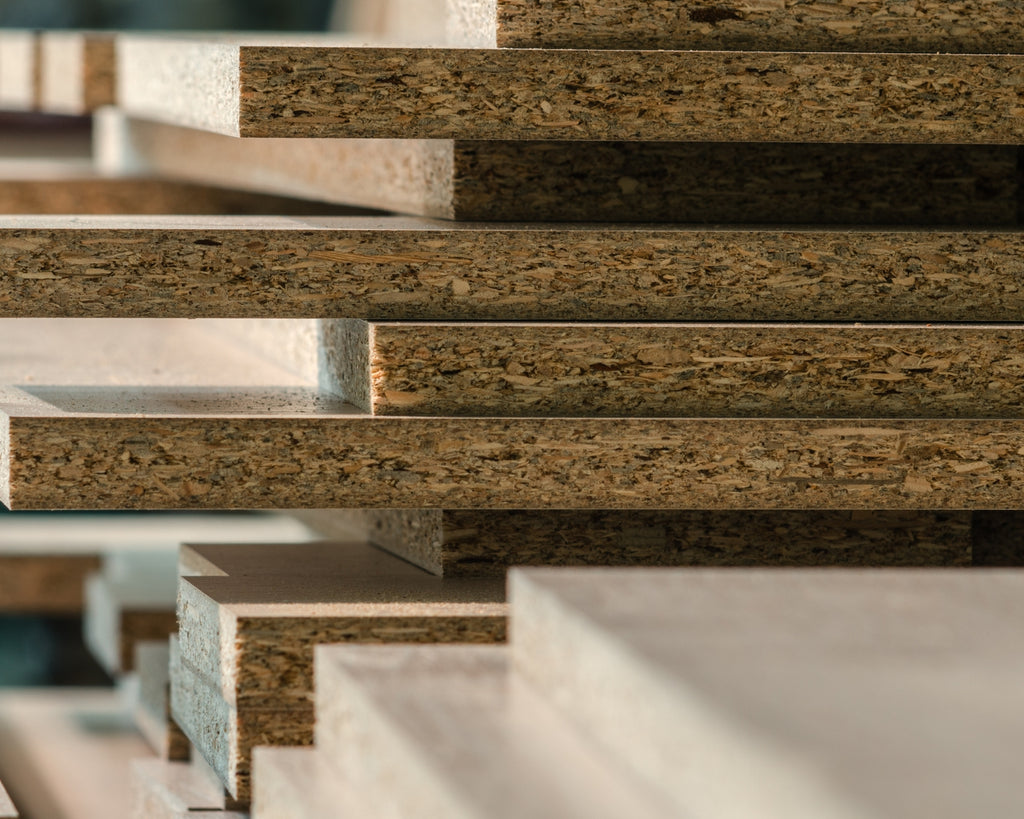
OSB Board Manufacturing Process
Utilising advanced technology and precision machinery, the manufacturing process for OSB board involves compressing and bonding wood strands to create a durable and versatile construction material.
The process begins with the procurement of timber supplies, which are then shredded into small wood strands. These wood strands are layered in cross-oriented orientation to enhance strength and stability. The strands are then coated with a resin binder, often a type of waterproof phenol-formaldehyde, before being subjected to high temperature and pressure in a continuous press. This compresses the layers and activates the resin, resulting in a strong and cohesive panel.
The engineered wood panels that result from this manufacturing process have gained popularity for their affordability, strength, and suitability for load-bearing applications. The advanced manufacturing techniques ensure that the OSB board is uniform in quality and possesses consistent structural properties.
Additionally, the manufacturing process allows for customisation of the board's thickness and dimensions, making it suitable for various construction and renovation projects. Overall, the manufacturing process of OSB board showcases the innovation and precision involved in creating a reliable and versatile engineered wood product.
OSB Board Thickness Options
When selecting OSB board thickness, consider the specific structural requirements and load-bearing needs of your construction project. The thickness of OSB boards typically ranges from 6mm to 25mm, offering versatility for various applications. Here's what you need to know about OSB board thickness options:
- 6mm: Ideal for interior projects such as decorative wall paneling or furniture backing. It provides a lightweight and cost-effective solution for non-load-bearing applications.
- 9mm to 11mm OSB: Suitable for sheathing and roof decking, offering good structural support while remaining relatively lightweight compared to plywood.
- 15mm to 18mm OSB: Commonly used for subflooring, providing sturdy support for heavy loads and high foot traffic areas.
- 22mm to 25mm: Best for heavy-duty load-bearing applications such as industrial shelving, mezzanine floors, or other structural elements where strength and durability are paramount.
When choosing the right OSB board thickness, always consider the specific demands of your project to ensure optimal performance and structural integrity.
Advantages of OSB Board
Consider the advantages of OSB board, which complement its varied thickness options, making it a versatile choice for a wide range of construction needs. One of the key advantages of OSB board is its cost-effectiveness. Compared to plywood, OSB board is often more affordable, making it an attractive option for budget-conscious projects. Additionally, OSB board is known for its strength and durability, as it's engineered to withstand heavy loads and harsh weather conditions. Its structural integrity makes it suitable for various applications, from sheathing and roofing to sub flooring and wall construction.
Another advantage of OSB board is its environmentally friendly nature. It's often manufactured using fast-growing, sustainable wood species, making it a renewable resource. Furthermore, the manufacturing process of OSB board produces less waste compared to other wood panel products, aligning with eco-friendly construction practices. Additionally, OSB board's layered construction provides dimensional stability and uniform strength, reducing the likelihood of warping or splitting during use. These benefits make OSB board a preferred choice for many builders and engineers.
OSB Board Vs. Plywood
Comparing OSB board to plywood reveals distinct differences in their composition, performance, and suitability for various construction applications.
OSB board, also known as oriented strand board, is made from compressed wood strands bonded with adhesives, while plywood is constructed from thin layers of wood veneer glued together.
When it comes to strength and stability, OSB board is known for its uniformity and resistance to warping, whereas plywood is renowned for its strength and durability, making it an ideal choice for demanding structural applications.
Additionally, OSB board is moisture resistant, making it suitable for use in humid environments, while plywood may require additional treatment to achieve the same level of moisture resistance.
Finally, for those seeking a more cost-effective option, OSB board is often preferred for its trade quality and affordability, while plywood tends to be pricier due to its production process and material quality.
These distinctions highlight the importance of carefully considering the specific requirements of each construction project when choosing between OSB board and plywood.
Understanding OSB Sheets: Versatile Structural Sheet Materials
OSB sheets, or Oriented Strand Boards, are versatile sheet materials commonly used in construction and furniture production. Made from compressed layers of wood strands bonded together with resin, OSB sheets offer excellent rigidity and strength, making them suitable for a wide range of applications. Available in various sizes and thicknesses, such as the OSB 3 board measuring 2440mm x 1220mm, these sheets provide cost-effective solutions for structural use in both new-build projects and renovations.
Structural Applications of OSB Board
OSB board is a versatile and reliable choice for various structural applications due to its uniform strength, resistance to warping, and cost-effectiveness. When it comes to load-bearing tasks, OSB board excels, providing robust support for floors, walls, and roofs in both residential and commercial construction. Its engineered wood composition ensures that it can handle the demands of structural applications, offering consistent performance under heavy loads. Additionally, OSB board's water-resistant properties make it suitable for use in environments where moisture exposure is a concern, such as subflooring and wall sheathing.
In structural applications, the cost-effectiveness of OSB board is particularly advantageous, as it provides a durable and reliable alternative to traditional plywood. Whether used in framing, sheathing, or decking, its affordability makes it an attractive option for builders and contractors looking to maintain high-quality standards while managing costs. Ultimately, for load-bearing and water-resistant structural applications, OSB board stands out as a practical and dependable choice, offering the needed strength and resilience in engineered wood products.
OSB Board in Flooring
When choosing flooring materials for your project, a durable and cost-effective option to consider is OSB board. OSB board is a versatile choice for flooring applications due to its strength and affordability. Here's why you should consider using OSB board for your flooring needs:
- Reliability: OSB board is known for its structural integrity, providing a stable and sturdy foundation for your floors.
- Ease of Installation: With its tongue and groove edges, OSB board facilitates a seamless installation process, saving you time and effort.
- Adhesive Compatibility: OSB board works well with various types of adhesives, ensuring a secure bond between the flooring material and the subfloor.
- Suitability for Dry Conditions: In indoor settings with dry conditions, OSB board performs exceptionally well, making it an ideal choice for residential and commercial flooring projects.
Utilizing OSB Sheets for Structural Applications
OSB sheets are engineered to be suitable for load-bearing applications, making them a popular choice for subflooring, roof decking, and sheathing. With their water-resistant and moisture-resistant properties, OSB sheets are ideal for use in damp conditions, ensuring durability and longevity in various environments. Additionally, OSB sheets can be used in dry conditions and interior applications, including furniture production and laminate flooring, providing versatility and durability for tradespeople and building companies.
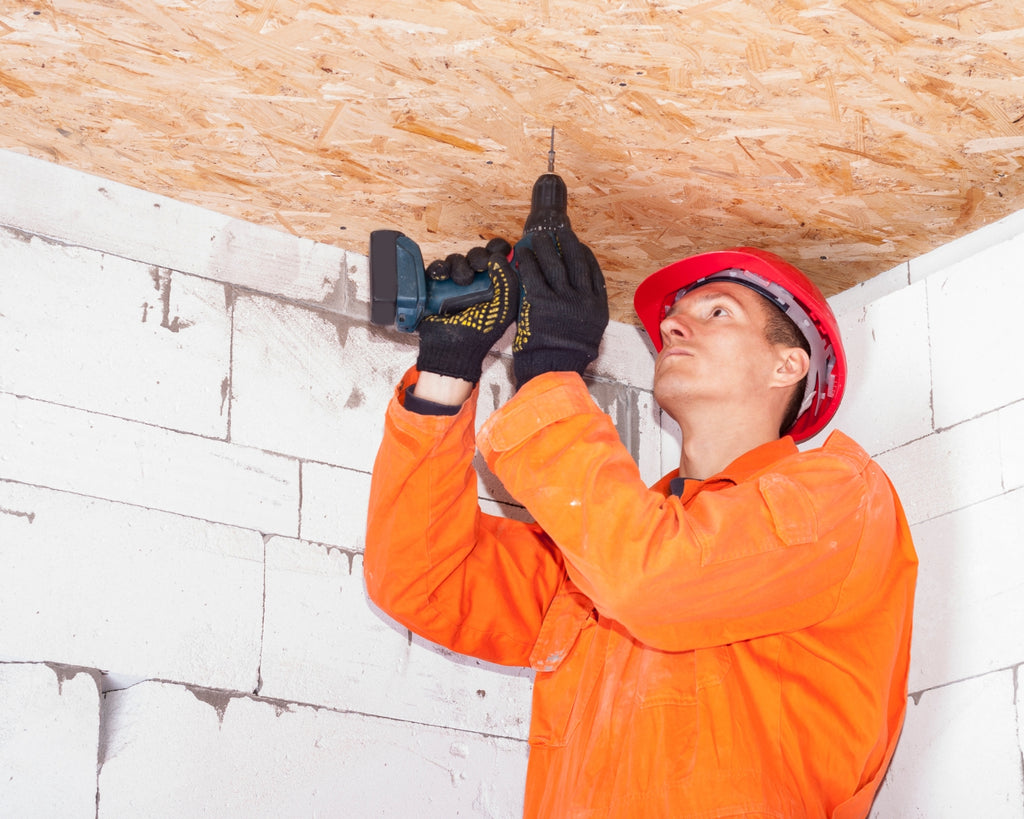
Using OSB Board for Roofing
Considering the durability and cost-effectiveness of OSB board, it's a practical choice for roofing applications due to its structural strength and suitability for various weather conditions. OSB, or oriented strand board, is a reliable option for roofing projects. It provides excellent support for roofing materials and can withstand substantial loads. OSB boards are engineered from layers of timber strands, bonded together with resin and wax, creating a strong and durable panel. This construction makes OSB boards resilient to changes in temperature and humidity, making them suitable for load-bearing applications such as roofing.
When used for roofing, OSB boards offer an effective base for shingles or other roofing materials. Their structural strength and dimensional stability make them ideal for supporting the weight of heavy roofing materials, as well as providing a stable surface for installation. Additionally, OSB boards are often more cost-effective compared to plywood, making them an attractive option for roofing projects where budget considerations are crucial.
Exterior Applications of OSB Board
Picking the discussion up from the structural strength and suitability for various weather conditions mentioned in the previous section, the exterior applications of OSB board extend to a wide range of uses in construction and renovation projects. When considering exterior applications, OSB board stands out for its versatility and durability. Here are a few essential uses:
- Roof Decking: OSB board is commonly used as roof decking due to its load-bearing capabilities and resistance to moisture, making it an ideal choice for protecting the interior of your home from the elements.
- Siding: Its strength and weather resistance make OSB board a reliable option for exterior siding, offering a cost-effective alternative to traditional materials.
- Sheathing: As an excellent base for exterior finishes, OSB board provides structural support and enhances the insulation of your property.
- Exterior Trim: OSB board can be used for exterior trim work, adding a touch of style while ensuring long-lasting performance.
Incorporating OSB board into your exterior construction projects can provide durability and efficiency, helping you create a safe and resilient living space.
Interior Applications of OSB Board
Looking to enhance the interior of your home with a versatile and durable material?
OSB board is an excellent choice for various interior applications. In furniture production, OSB board is commonly used for crafting shelves, cabinets, and even bed frames due to its strength and cost-effectiveness.
It can also be used as a substrate for laminate flooring, providing a sturdy base for the laminate to adhere to.
Additionally, OSB board can be utilized for wall and ceiling paneling, offering a rustic and industrial look to interior spaces. Its affordability and ease of installation make it a popular choice for homeowners and builders alike.
When it comes to sheet materials, OSB board stands out for its versatility, making it suitable for a wide range of interior projects. Whether you're looking to add structural support, create custom furniture pieces, or enhance the aesthetic appeal of your home, OSB board is a practical and reliable option for interior applications.
Environmental Benefits of OSB Board
With its sustainable sourcing and minimal waste production, OSB board offers notable environmental benefits that contribute to a greener approach in construction and design.
- Renewable Sourcing: OSB board is made from fast-growing trees, such as aspen and poplar, which are sourced from sustainably managed forests, reducing the demand for old-growth timber and promoting reforestation efforts.
- Minimal Waste: The engineered wood production process of OSB board minimizes waste by utilizing small-diameter logs and wood chips that would otherwise go unused, reducing the environmental impact of logging activities.
- Reduced Formaldehyde Emissions: OSB board manufactured to meet industry standards emits minimal levels of formaldehyde, contributing to healthier indoor air quality and a safer environment for occupants.
- Longevity and Recyclability: OSB board's durability ensures a long service life, and at the end of its use, it can be recycled into other wood products, reducing the burden on landfills and promoting a circular economy.
These environmental benefits make OSB board an attractive choice for environmentally conscious construction and design projects, aligning with the growing emphasis on sustainability and eco-friendly materials.
Optimizing Performance with OSB Sheets
Manufactured according to EN 300 standards, OSB sheets offer consistent mechanical performance and resistance to moisture, ensuring reliable structural support in diverse settings. The use of OSB sheets as an alternative to plywood provides excellent cost-effective solutions without compromising on quality. Tradespeople can rely on OSB sheets from reputable suppliers like Norbord to meet specific project requirements, whether for residential or commercial construction, providing rigidity, strength, and stability for load-bearing applications.
Cost-Effectiveness of OSB Board
When considering construction materials, OSB board stands out for its cost-effectiveness and diverse applications in various building projects.
OSB board is a highly cost-effective option for construction due to its affordability compared to other building materials. It's a popular choice for both residential and commercial projects, offering a durable and versatile solution for a wide range of applications. Its cost-effectiveness makes it an attractive option for builders and contractors looking to maximize their budget without compromising on quality.
In building and construction, the cost-effectiveness of OSB board also extends to its durability and load-bearing capabilities. It's designed to withstand heavy loads and provide structural support, making it suitable for flooring, wall sheathing, and roof decking.
This durability ensures that the material holds up well over time, reducing the need for frequent repairs or replacements, which can contribute to long-term cost savings.
Installing OSB Board
Considering the cost-effectiveness and durability of OSB board in construction, the installation process plays a crucial role in ensuring its structural integrity and long-term performance. When you install OSB board for your flooring or subflooring, it's essential to pay attention to every detail to guarantee a sturdy and reliable outcome.
Here are four key tips to keep in mind as you embark on installing OSB board:
- Prepare the Subfloor: Adequate preparation of the subfloor is vital to ensure a smooth and durable installation. Clean the subfloor thoroughly, remove any debris, and ensure it's level to prevent unevenness in the OSB board installation.
- Use Proper Fasteners: Selecting the right fasteners is crucial for the longevity of the installation. Utilize screws or nails specifically designed for OSB board to ensure a secure and lasting fit.
- Allow for Expansion Gaps: When installing OSB board for flooring, remember to leave expansion gaps around the perimeter to accommodate any potential expansion or contraction, thus preventing buckling or warping.
- Follow Manufacturer Guidelines: Adhering to the manufacturer's guidelines for installation, including spacing and fastening requirements, is essential to ensure the durability and longevity of the OSB board.
Exploring OSB Sheets: A Range of Applications
From subflooring in new-build homes to sheathing in renovation projects, OSB sheets provide versatile solutions for various construction needs. Their mechanical properties, including strength and stability, make them suitable for specific orientations and load-bearing applications. Whether used in furniture production or as roof decking in building and construction, OSB sheets offer a durable and cost-effective alternative with a wide range of applications, ensuring optimal performance and reliability in every project.
Finishing OSB Board Surfaces
To enhance the appearance and durability of OSB board surfaces, consider applying a protective finish to seal and protect the material. Finishing OSB board surfaces not only adds to their aesthetic appeal but also extends their lifespan by providing a protective barrier against moisture, scratches, and general wear and tear.
When finishing OSB board surfaces, you have a range of versatile options to choose from, including paints, stains, and sealants. These finishes come in various colors and textures, allowing you to customize the look of your project while ensuring its durability.
Applying a finish to OSB board surfaces also helps to enhance their rigidity, making them even more durable for use in construction, furniture, and other applications. It's important to select a finish that's specifically designed for OSB and follow the manufacturer's instructions for proper application.
Maintenance of OSB Board
Maintain the integrity and longevity of OSB board by regularly inspecting for signs of damage and promptly addressing any issues that may compromise its structural integrity. Follow these maintenance tips to ensure your OSB board remains durable and reliable in various conditions:
- Regular Inspection: Take time to visually inspect the OSB board for any signs of swelling, warping, or delamination, especially in humid conditions. Promptly addressing these issues can prevent further damage and ensure the board's longevity.
- Moisture Control: Keep OSB board dry and well-ventilated to prevent moisture buildup, which can compromise its structural integrity over time. Consider using a water-repellent finish or paint to provide additional protection.
- Avoid Prolonged Exposure: Protect OSB board from prolonged exposure to direct sunlight, as UV rays can cause discoloration and degradation of the engineered wood fibers.
- Prompt Repairs: Address any scratches, dents, or surface damage promptly to prevent them from worsening and compromising the board's structural strength.
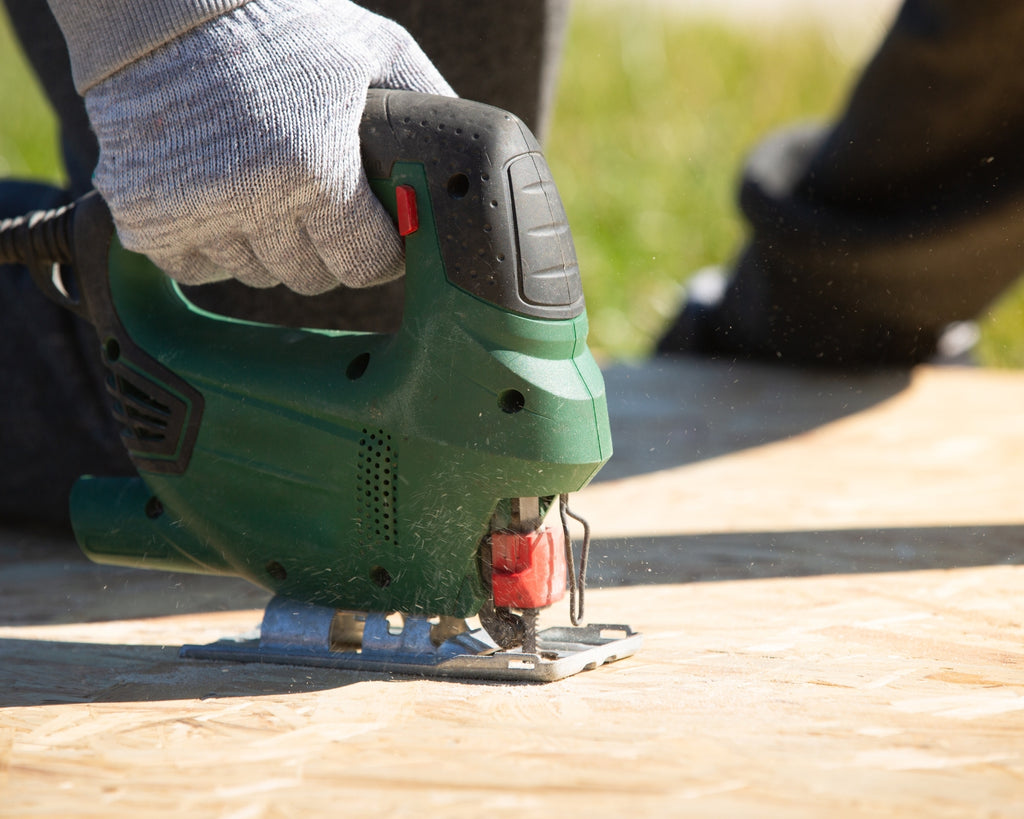
Common Misconceptions About OSB Board
Despite its durability and versatility, there are several common misconceptions about OSB board that deserve clarification.
One prevalent misconception is that OSB board isn't as durable as plywood. In reality, OSB board is made from layers of wood strands that are compressed and bonded together with resin, making it highly durable and suitable for various applications.
Another misconception is that OSB board isn't suitable for exterior use. However, with proper sealing and finishing, OSB board can effectively withstand outdoor conditions, making it a cost-effective option for projects such as sheathing and roof decking.
Additionally, some may believe that OSB board isn't environmentally friendly due to its manufacturing process. Contrary to this belief, OSB board is often made from fast-growing, sustainable wood species, and the manufacturing process utilizes wood strands that would otherwise go to waste.
Understanding these common misconceptions about OSB board can help you make informed decisions about its versatile uses and benefits in construction and DIY projects.
Safety Considerations When Working With OSB Board
When working with OSB board, prioritize your safety by wearing appropriate protective gear and ensuring proper ventilation in the work area. OSB board, known for its excellent load-bearing and mechanical properties, is a popular choice in construction and woodworking projects. However, it's important to be mindful of safety considerations when handling this engineered wood product.
Here are four crucial safety considerations to keep in mind:
- Protective Gear: Always wear safety goggles, gloves, and a dust mask when cutting or sanding OSB board to prevent eye injuries, splinters, and inhalation of wood particles.
- Ventilation: Work in a well-ventilated area or use a dust extraction system to minimize exposure to airborne wood dust, which can cause respiratory issues.
- Handling Heavy Panels: Exercise caution when lifting and carrying OSB panels, as they can be heavy. Use proper lifting techniques to prevent strain or injury.
- Tool Safety: Ensure that cutting tools are sharp and in good condition to avoid kickback and uneven cuts that can lead to accidents.
Future Trends in OSB Board Development
As the demand for sustainable and versatile building materials continues to grow, OSB board is poised to undergo innovative advancements in its development. Future trends in OSB board development are geared towards enhancing its performance and expanding its range of versatile applications. One of the key areas of focus is to further improve the structural properties of OSB boards, making them even more robust and durable. This involves the use of advanced engineering techniques to enhance the board's strength and load-bearing capabilities.
Moreover, future developments in OSB board are expected to prioritize eco-friendly manufacturing processes and sustainable sourcing of raw materials. This aligns with the increasing emphasis on environmentally responsible practices within the construction industry. Additionally, advancements in engineered wood technology are likely to lead to the creation of OSB boards with enhanced moisture resistance and fire-retardant properties, further expanding their potential applications in various construction projects.
Furthermore, the integration of digital manufacturing technologies and innovative design approaches is anticipated to revolutionize the customization and production of OSB boards, allowing for tailored solutions to meet specific project requirements. These future trends in OSB board development signify a promising direction for the continued growth and diversification of engineered wood products in the construction sector.
Conclusion
So, next time you're considering building or renovating, don't overlook the versatility and benefits of OSB board.
Did you know that OSB board is the most widely used structural panel in the world, with production exceeding 10 billion square feet annually?
That's a lot of trust and confidence in the performance of OSB board for various construction projects.
Consider adding it to your next project and experience the benefits for yourself.
